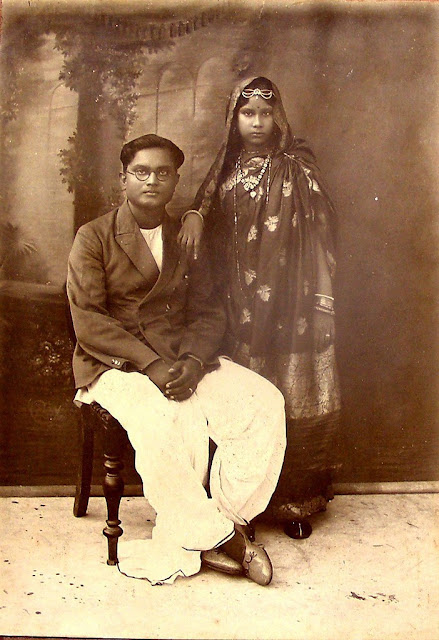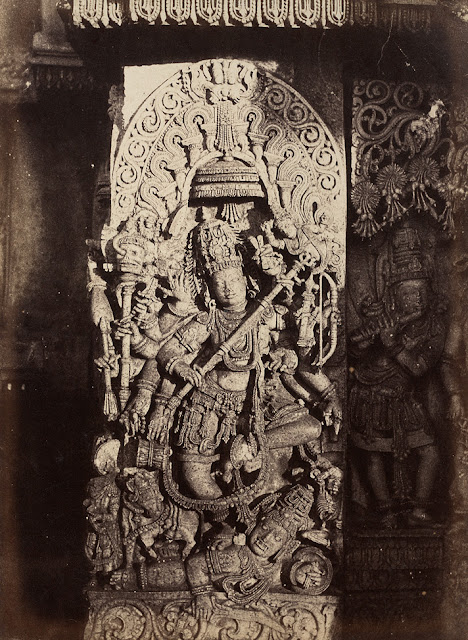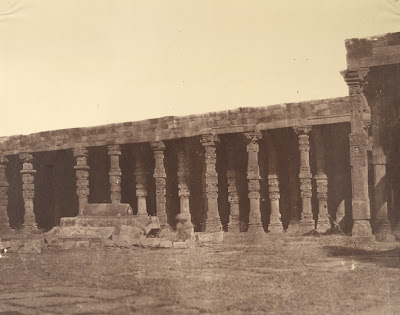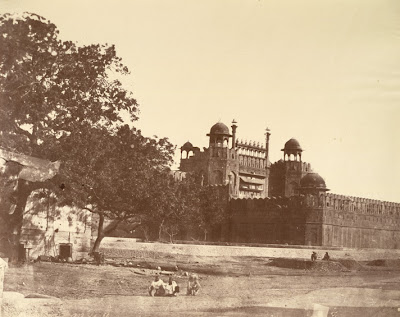|
View: 16008|Reply: 18
|
GAMBAR-GAMBAR LAMA INDIA
[Copy link]
|
|
|

FAMILIES LIVING ON STREET- NEW DELHI 1948
Like many other refuges in Delhi, India, these families live on the street. They eat, sleep, cook, wash and do dustness on the pavement under the arch of a road overpass near New Delhi.

The Delegates of the All-India Convention of the Congress - New Delhi 1937
The Delegates of the All-India Convention of the Congress, as they Assembled at New Delhi to Pass on the Proposal to Participate in the New Constitutional Government Provided by the British Parliament. The Fefusal of the Congress Party, the Majority Groupto Accept Office in Six of the Provinces Revived the Fear of Unrest Among the 350,000,000 People of the England's Empire in the East.

Water-Short India Faces Hottest Summer in Decade - From Chicago Sun-Times June 5, 1966
Man drinking water from a metal pot

Indian Husband and Wife Vintage Photograph

Raj Kapoor and Shammi Kapoor (standing); Prithviraj Kapoor
with Randhir Kapoor on his lap and Shashi Kapoor (sitting)
 |
Rate
-
1
View Rating Log
-
|
|
|
|
|
|
|
|
|
|
|

Arch and Iron Pillar near Qutub Minar - Delhi - 1850s
The iron pillar of Delhi, India is a 7 meter (22 feet) high pillar in the Qutb complex which is notable for the composition of the metals used in its construction.
The pillar, which weighs more than six tons, is said to have been fashioned at the time of Chandragupta Vikramaditya (375–413),though other authorities give dates as early as 912 BCE.The pillar initially stood in the centre of a Jain temple complex housing twenty-seven temples that were destroyed by Qutb-ud-din Aybak, and their material was used in building the Qutub Minar and Quwwat-ul-Islam mosque. The pillar and ruins of the temple stand all around[clarification needed] the Qutb complex today. The pillar is 98% pure wrought iron, and is a testament to the high level of skill achieved by ancient Indian blacksmiths. It has attracted the attention of both archaeologists and metallurgists, as it has withstood corrosion for over 1,600 years in the open air. (Wikipedia)

Figure of Durga at Halebid in Karnataka - 1856
An albumen print by Richard Banner Oakeley of the figure of Durga at Halebid in Karnataka. Halebid (ancient Dwarasamudra), a small town in the Hassan district, was once the capital of the Hoysala dynasty of the southern Deccan which flourished from about 1100-1350 AD. Invasions by the Delhi Sultanate in the 14th century led to its decline. The Hoysalas were avid temple builders and the site is renowned for the remnants of architecture and sculpture fashioned out of the chloritic schist in the region. The most famous monument here is the twelfth-century Hoysaleswara temple dedicated to Shiva, which was built for an official of Vishnuvardhana (reigned 1108-42). It is an exemplar of the lavish Hoysala style and is encrusted with continuous bands of sculpture, unsurpassed in its detail and vitality. Here Durga (a form of Shakti the Mother Goddess) is seen in a typical pose slaying the demon Mahisha

Rao Petarah's Temple, Delhi 1858
Photograph of Rao Petarah's Temple, Delhi, taken by Dr. John Murray in 1858. The photograph shows a section from the Quwwat al-Islam mosque, part of the complex in South Delhi that includes the Qutb Minar. The complex was first begun by Qutb-u’d-din Aibak, the first ruler of the Slave Dynasty, and was added to by many subsequent rulers. The Quwwat al-Islam mosque was built in 1192. Inscriptions record that spolia from 27 Jain and Hindu temples that were torn down for its creation. Pillars from the destroyed temples were reused and the Hindu images were plastered over with geometric designs. Over time, the plaster has fallen away revealing the original Hindu carvings. This may explain why the caption refers to the building as a temple instead of a mosque created out of Hindu architectural material.

Exterior of the Lahore Gate of Palace, Delhi - 1858
Photograph of Lahore Gate in Delhi from 'Murray Collection: Views in Delhi, Cawnpore, Allahabad and Benares' taken by Dr. John Murray in 1858 after the Uprising of 1857. The Lahore Gate, the western gate to the Red Fort or Lal Qila, was constructed by Mughal Emperor Shah Jahan (r. 1627-1658) for his new city Shahjahanabad. The Lahore gate was one of the main entrances to the fort and is composed of a central arch with side towers. The octogonal shaped fort complex is surrounded by high fortification walls of red sandstone which reach between 18-33 m in height. Key palace buildings inside the fort include the Diwan-i-Am (Hall of Public Audience), the Diwan-i-Khas (Hall of Private Audience), Moti Masjid, and the Khas Mahal (private chambers of the emperor).

Humayoon's Tomb, Delhi - 1858
Photograph of Humayun's tomb in Delhi from 'Murray Collection: Views in Delhi, Cawnpore, Allahabad and Benares' taken by Dr. John Murray in 1858 after the Uprising of 1857. The tomb of the Mughal Emperor Humayun (r. 1530-56) was constructed c.1565 by his widow Haji Begum. The architectural style incorporated Persian and Mughal styles which later influenced the building of the Taj Mahal in Agra with similar features including a central bayed arch, a raised dome, and the use of chatris or pavilions. The tomb is located within a char bagh, a four-fold garden. "Based on the char bagh types established in Iran and more fully developed in Babur's own concept of the ideal garden, such formalized and geometrically planned garden settings became standard for all the imperial Mughal mausolea."
Sumber foto2 di atas : http://www.oldindianphotos.in/search/label/1850s |
Rate
-
1
View Rating Log
-
|
|
|
|
|
|
|
|
|
|
|
 good info good info |
|
|
|
|
|
|
|
|
|
|
|
Keluarga Kapoor asal dari Pakistan
 |
|
|
|
|
|
|
|
|
|
|
|
Reply 7# HangPC2
Terima kasih bang atas tegurannya...
Saya mintak maaf sebab salah saya... |
|
|
|
|
|
|
|
|
|
|
|
Reply HangPC2
Terima kasih bang atas tegurannya...
Saya mintak maaf sebab salah saya.. ...
selerakampung Post at 8-3-2012 10:39 
tak ada salah cuma saya nak maklumkan jer....
Lepas Pakistan dan India merdeka... Keluarga Kapoor nih... berhijrah ke Bombay.... |
|
|
|
|
|
|
|
|
|
|
|
tak ada salah cuma saya nak maklumkan jer....
Lepas Pakistan dan India merdeka... Kelua ...
HangPC2 Post at 8-3-2012 11:43 
Terima kasih..Saya kurang peka sebab tak berapa menjengah sangat cerita-cerita Bolywood... |
|
|
|
|
|
|
|
|
|
|
|
Terima kasih..Saya kurang peka sebab tak berapa menjengah sangat cerita-cerita Bolywood...
selerakampung Post at 8-3-2012 11:45 
memang ada berlaku penghijrah besar-besaran Hindu Di Pakistan berhijrah ke India manakala Muslim di India berhijrah Ke Pakistan |
|
|
|
|
|
|
|
|
|
|
|
|
cam tak berubah jer India dari dulu sampai skrg.... |
|
|
|
|
|
|
|
|
|
|
|
|
penduduk depa ramai kannnnnnn |
|
|
|
|
|
|
|
|
|
|
|
|
pakistanis..mata depa..memang lawa |
|
|
|
|
|
|
|
|
|
|
|
|
ramai nyer rakyat nyer..... |
|
|
|
|
|
|
|
|
|
|
|
|
cantik juga permandangan taj mahal dgn gambar hitam putih.. |
|
|
|
|
|
|
|
|
|
|
|
|
memang asyik tgk gambaq lama. |
|
|
|
|
|
|
|
|
|
| |
|